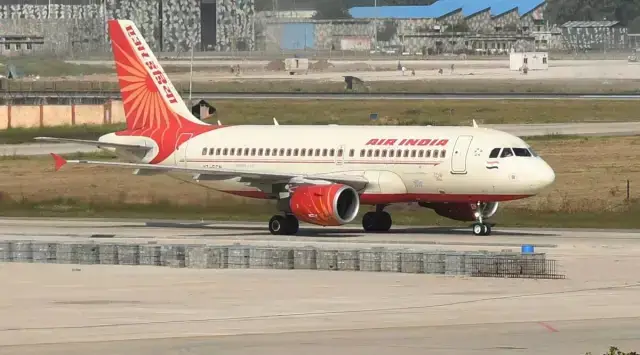
Introduction
Air India, India’s national carrier, has recently announced a revamp of its compensation structure for pilots and cabin crew. The move is aimed at improving employee engagement and retention, which have been persistent challenges for the airline in recent years. The new structure includes several changes, such as an increase in fixed pay, performance-based incentives, and an improved benefits package. In this article, we will take a closer look at the revamped compensation structure and its potential impact on Air India’s workforce.
Key Changes in the Revamped Compensation Structure
The revamped compensation structure for Air India’s pilots and cabin crew includes the following key changes:
- Increase in Fixed Pay: The fixed pay component of the compensation structure has been increased significantly. This means that employees will receive a higher base salary, which will be reflected in their monthly paychecks.
- Performance-Based Incentives: The new structure also includes a performance-based incentive component, which will be linked to various metrics such as on-time performance, customer satisfaction, and safety. This means that employees who perform well on these metrics will be eligible for additional bonuses and rewards.
- Improved Benefits Package: Air India has also improved the benefits package offered to its employees, which includes health insurance, travel allowances, and retirement benefits. The airline has also introduced a new leave policy that allows employees to take more time off and provides greater flexibility in scheduling.
Potential Impact on Air India’s Workforce
The revamped compensation structure is expected to have a significant impact on Air India’s workforce. Here are some of the potential benefits:
- Increased Employee Engagement: By offering a more attractive compensation package, Air India is likely to improve employee engagement levels. This can lead to a more motivated and productive workforce, which can translate into better business results for the airline.
- Reduced Employee Turnover: Employee turnover has been a major challenge for Air India in recent years. By offering a more competitive compensation package, the airline is likely to reduce turnover rates and retain its talented employees.
- Improved Customer Satisfaction: The new performance-based incentive component of the compensation structure is likely to improve various customer satisfaction metrics, such as on-time performance and service quality. This can lead to a more satisfied customer base, which can help Air India compete more effectively in the highly competitive airline industry.
Conclusion
Air India’s decision to revamp its compensation structure for pilots and cabin crew is a positive step towards improving employee engagement and retention. The new structure offers a more competitive and attractive package, which is likely to lead to a more motivated and productive workforce. Moreover, the improved benefits package and performance-based incentives are likely to improve various customer satisfaction metrics, which can help Air India compete more effectively in the highly competitive airline industry. Overall, the revamped compensation structure is a win-win for both employees and the airline.
The airline industry has been hit hard by the COVID-19 pandemic, and Air India is no exception. The airline has faced significant financial challenges, including a decline in passenger traffic and revenue. However, the revamp of the compensation structure is a positive move towards addressing some of the challenges the airline has been facing in employee engagement and retention.
Employee engagement is a crucial factor in any organization’s success. Highly engaged employees are more productive, motivated, and committed to their jobs. They are also less likely to leave their jobs, which can save organizations significant costs associated with employee turnover. Air India has struggled with employee engagement and retention in recent years, which has impacted its performance.
The revamped compensation structure is designed to address some of the underlying issues that have contributed to Air India’s employee engagement and retention challenges. The increase in fixed pay is a significant improvement, as it provides employees with greater financial security and stability. The performance-based incentives are also an excellent addition, as they encourage employees to perform at their best and reward them for their contributions.
Moreover, the improved benefits package is a great way to show employees that Air India values their contributions and is committed to their well-being. The new leave policy is another excellent addition, as it provides employees with greater flexibility and work-life balance.
The revamped compensation structure is likely to have a positive impact on Air India’s business performance. By improving employee engagement and retention, the airline is likely to have a more motivated and productive workforce, which can lead to better business results. Moreover, the improved customer satisfaction metrics are likely to attract more customers and improve the airline’s competitiveness in the highly competitive airline industry.
In conclusion, Air India’s decision to revamp its compensation structure for pilots and cabin crew is a positive move towards improving employee engagement and retention. The new structure offers a more attractive package, which is likely to lead to a more motivated and productive workforce. Moreover, the improved benefits package and performance-based incentives are likely to improve customer satisfaction levels, which can help Air India compete more effectively in the highly competitive airline industry. Overall, the revamped compensation structure is a win-win for both employees and the airline.
FAQ
Q: What prompted Air India to revamp its compensation structure for pilots and cabin crew? A: Air India has been facing persistent challenges in employee engagement and retention. The revamped compensation structure is aimed at addressing these challenges and improving the airline’s workforce.
Q: What are the key changes in the revamped compensation structure? A: The key changes include an increase in fixed pay, performance-based incentives, and an improved benefits package.
Q: What is the potential impact of the revamped compensation structure on Air India’s workforce? A: The revamped compensation structure is expected to increase employee engagement, reduce turnover rates, and improve customer satisfaction levels.
Read more about: <strong>Air India Finalises Deal With Airbus For Buying Around 250 Planes</strong>









